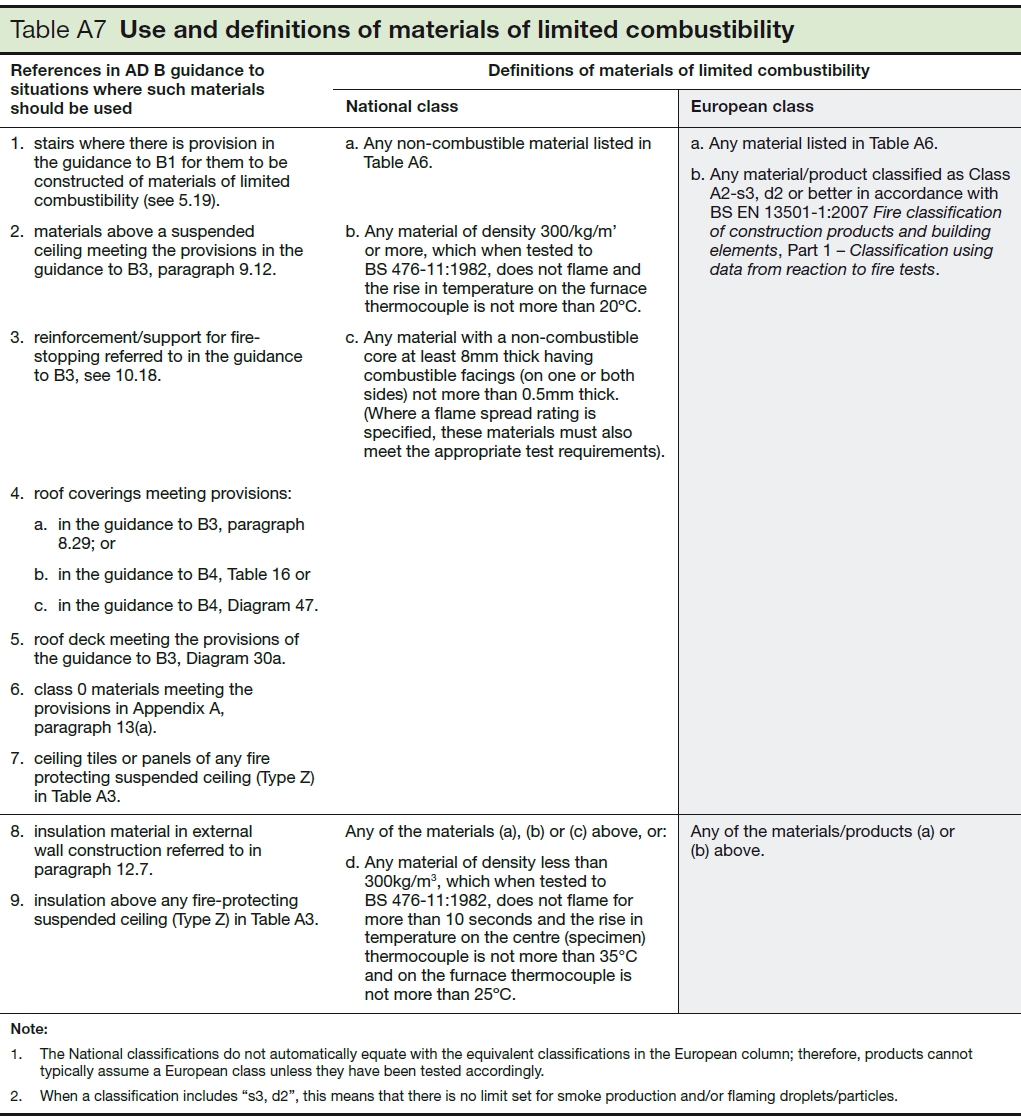Limited combustibility
In England, the building regulations establish requirements for specific aspects of building design and construction. Approved documents then provide guidance for satisfying those requirements in common building situations.
Approved document B of the building regulations 'Fire Safety', defines limited combustibility as: 'A material performance specification that includes non-combustible materials, and for which the relevant test criteria are set out in Appendix A, paragraph 9.'
Requirements for materials of limited combustibility are defined in table A7 of Approved Document B.
Following the Grenfell Tower Fire, a decision was taken to ban combustible materials in the cladding for buildings over 18m in height. The following change to approved document 7 came into force on 21 December 2018.
| The Building Regulations restrict the use of combustible materials in the external walls of certain buildings over 18m in height. Refer to regulation 7(2) of the Building Regulations and to Approved Document B: volume 2, part B4 for details. |
[edit] Related articles on Designing Buildings Wiki
- ACM cladding.
- Approved document B.
- Approved inspector.
- BR 135 Fire Performance of external thermal insulation for walls of multi-storey buildings
- BS 8414 Fire performance of external cladding systems
- BS 9999.
- Building regulations.
- Combustibility.
- Fire and rescue service.
- Fire inspector.
- Fire safety design.
- Fire.
Featured articles and news
One of the most impressive Victorian architects. Book review.
RTPI leader to become new CIOB Chief Executive Officer
Dr Victoria Hills MRTPI, FICE to take over after Caroline Gumble’s departure.
Social and affordable housing, a long term plan for delivery
The “Delivering a Decade of Renewal for Social and Affordable Housing” strategy sets out future path.
A change to adoptive architecture
Effects of global weather warming on architectural detailing, material choice and human interaction.
The proposed publicly owned and backed subsidiary of Homes England, to facilitate new homes.
How big is the problem and what can we do to mitigate the effects?
Overheating guidance and tools for building designers
A number of cool guides to help with the heat.
The UK's Modern Industrial Strategy: A 10 year plan
Previous consultation criticism, current key elements and general support with some persisting reservations.
Building Safety Regulator reforms
New roles, new staff and a new fast track service pave the way for a single construction regulator.
Architectural Technologist CPDs and Communications
CIAT CPD… and how you can do it!
Cooling centres and cool spaces
Managing extreme heat in cities by directing the public to places for heat stress relief and water sources.
Winter gardens: A brief history and warm variations
Extending the season with glass in different forms and terms.
Restoring Great Yarmouth's Winter Gardens
Transforming one of the least sustainable constructions imaginable.
Construction Skills Mission Board launch sector drive
Newly formed government and industry collaboration set strategy for recruiting an additional 100,000 construction workers a year.
New Architects Code comes into effect in September 2025
ARB Architects Code of Conduct and Practice available with ongoing consultation regarding guidance.
Welsh Skills Body (Medr) launches ambitious plan
The new skills body brings together funding and regulation of tertiary education and research for the devolved nation.
Paul Gandy FCIOB announced as next CIOB President
Former Tilbury Douglas CEO takes helm.























